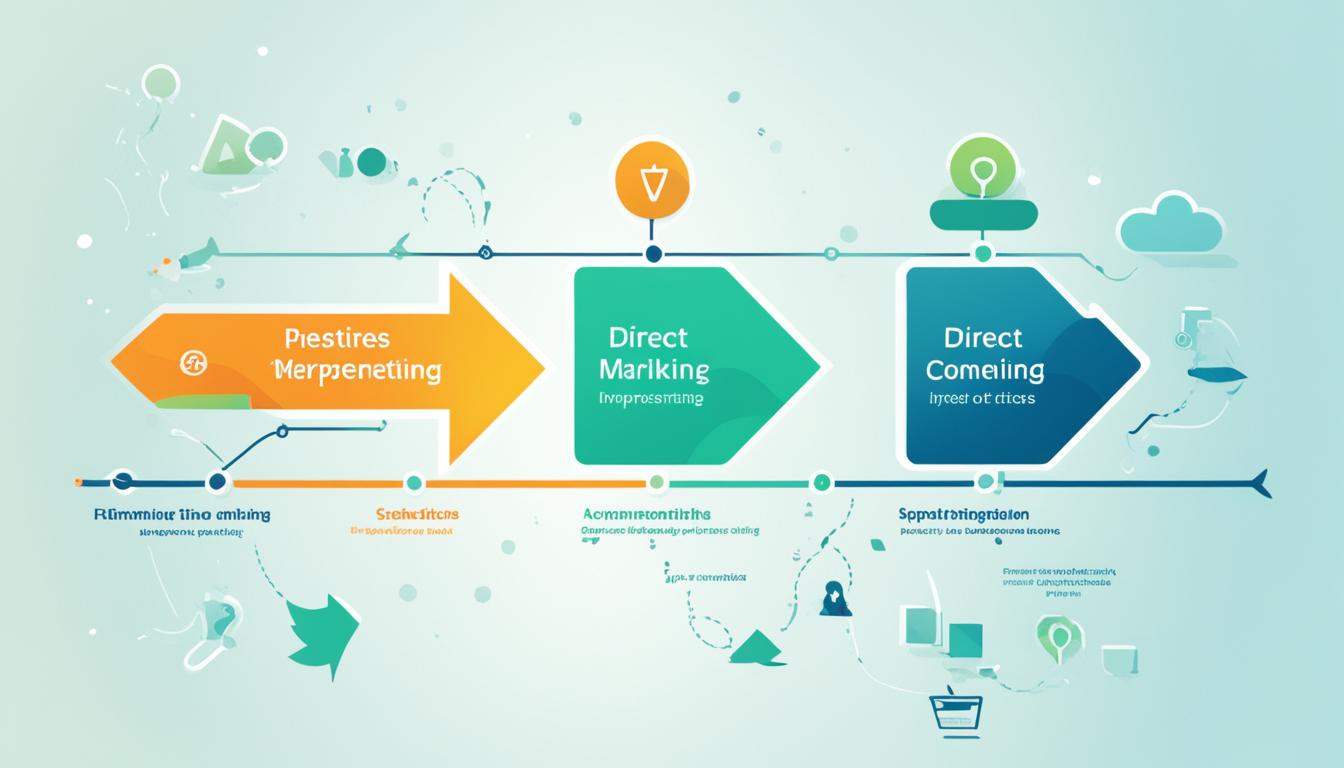In the ever-evolving world of digital marketing, the concept of “direct-linking” has become increasingly important. As we explore this topic, we’ll uncover what direct-linking is, how it has evolved over time, and the crucial role it plays in driving user engagement and targeted traffic to your online campaigns.
Direct-linking, at its core, is a strategic marketing technique that involves creating a direct connection between a specific piece of content, such as an advertisement or a call-to-action, and the desired destination, such as a product page or a lead capture form. This direct connection aims to streamline the user’s journey, making it easier for them to take the desired action, whether it’s making a purchase, submitting a form, or engaging with your brand.
As digital marketing has evolved, the importance of direct-linking has only grown. Marketers have recognized the power of this approach in driving higher conversion rates, increasing targeted traffic, and ultimately, delivering better results for their campaigns. By understanding the nuances of direct-linking, we can leverage its full potential and elevate our digital marketing strategies to new heights.
Understanding Direct-Linking in the Digital Realm
In the ever-evolving world of digital marketing, the concept of direct-linking has gained significant traction. As online strategies continue to transform, this powerful technique has emerged as a crucial tool for businesses seeking to enhance user engagement and drive higher conversion rates.
The Evolution of Online Marketing Strategies
The digital landscape has undergone a remarkable transformation over the past decade. Gone are the days of generic, one-size-fits-all marketing campaigns. Today, the focus has shifted towards personalized, targeted experiences that cater to the unique needs and preferences of individual consumers. Direct-linking has played a pivotal role in this evolution, enabling marketers to create seamless, streamlined pathways for users to engage with their brand.
The Role of Direct-Linking in User Engagement
At the heart of direct-linking lies the ability to create a direct connection between a specific piece of content or call-to-action and the desired destination. By eliminating unnecessary steps and distractions, direct-linking helps to keep users focused and engaged, ultimately leading to higher conversion rates. This strategy has become increasingly crucial in an era where attention spans are shorter than ever and competition for user engagement is fierce.
| Key Benefits of Direct-Linking | Metrics to Track |
|---|---|
|
|
By mastering the art of direct-linking, businesses can effectively navigate the digital landscape, fostering deeper connections with their target audience and driving tangible results in terms of user engagement, online marketing, and conversion optimization.
“Direct-linking is the backbone of a seamless digital experience, empowering brands to forge stronger relationships with their customers.”
Direct-Linking: A Powerful Tool for Targeted Traffic
In the digital marketing landscape, direct-linking has emerged as a strategic approach to drive targeted traffic to your online presence. By leveraging this powerful technique, we can effectively connect our audience with the most relevant content or offers, ultimately enhancing their user experience and driving meaningful conversions.
One of the key advantages of direct-linking is its ability to create a seamless pathway for our customers. Instead of forcing them to navigate through multiple pages or complex menus, we can guide them directly to the information or services they seek, streamlining the user journey and reducing the risk of abandonment.
Moreover, direct-linking allows us to segment our audience and deliver personalized experiences. By crafting targeted links that cater to specific interests or behaviors, we can ensure that our content resonates with the right people, leading to higher engagement and improved conversion rates.
“Direct-linking is a game-changer in the digital marketing world, allowing us to create laser-focused campaigns that deliver tangible results.”
To leverage the power of direct-linking, we can adopt strategies such as:
- Incorporating contextual links within our content to provide seamless transitions between related topics or offerings.
- Utilizing landing pages optimized for specific campaigns or product offerings, ensuring a cohesive and conversion-driven user experience.
- Experimenting with dynamic linking techniques, where the destination of the link can be tailored based on user data or behavior.
By mastering the art of direct-linking, we can unlock a world of possibilities in our digital marketing efforts, driving targeted traffic, enhancing user engagement, and ultimately, achieving our desired business outcomes.

Leveraging Direct-Linking for Effective Campaigns
In the world of digital marketing, direct-linking has emerged as a powerful tool for driving targeted traffic to your campaigns. By strategically leveraging this technique, marketers can enhance the success of their efforts and achieve measurable results.
Best Practices for Direct-Linking Implementation
To ensure the effectiveness of your direct-linking strategy, it’s essential to follow a set of best practices. Let’s explore some key considerations:
- Identify Relevant Platforms: Determine the platforms and channels where your target audience is most active, such as social media, influencer networks, or industry-specific websites. This will help you identify the right avenues for your direct-linking efforts.
- Create Compelling Content: Develop high-quality, engaging content that resonates with your audience. This could include product demonstrations, helpful tutorials, or thought-provoking articles. Ensure that your content is informative, entertaining, and aligns with your campaign objectives.
- Optimize for Conversion: Strategically place your direct-links within your content to maximize the chances of conversion. Analyze user behavior and adjust the placement and messaging of your links to improve click-through and conversion rates.
- Track and Measure Performance: Utilize analytics tools to monitor the performance of your direct-linking campaigns. Track metrics such as click-through rates, conversion rates, and return on investment (ROI) to identify areas for improvement and optimize your strategy over time.
By following these best practices, you can leverage direct-linking to drive targeted traffic, optimize your campaign optimization, and ultimately enhance the success of your affiliate marketing and conversion rate optimization efforts.
“Direct-linking is a game-changer in the world of digital marketing, allowing us to create targeted, high-performing campaigns that drive meaningful results.”
The Impact of Direct-Linking on Search Engine Optimization
As we’ve explored the powerful role of direct-linking in digital marketing, it’s essential to understand its impact on search engine optimization (SEO). This strategic approach can significantly influence your website’s visibility on search engine results pages (SERPs) and drive organic traffic to your content.
By incorporating direct-linking into your overall content strategy, we can optimize your website’s structure and make it more search engine-friendly. When search engines crawl and index your pages, they’ll recognize the clear pathways created by direct-links, leading to improved SERP rankings and increased visibility for your brand.
Moreover, the targeted nature of direct-linking can enhance the relevance and quality of the traffic you attract. By directing users to specific pages or sections of your website that are directly relevant to their interests, we can ensure a better user experience and increase the likelihood of conversions. This, in turn, can positively impact your website’s SEO metrics, such as dwell time and bounce rate, further boosting your search engine rankings.

